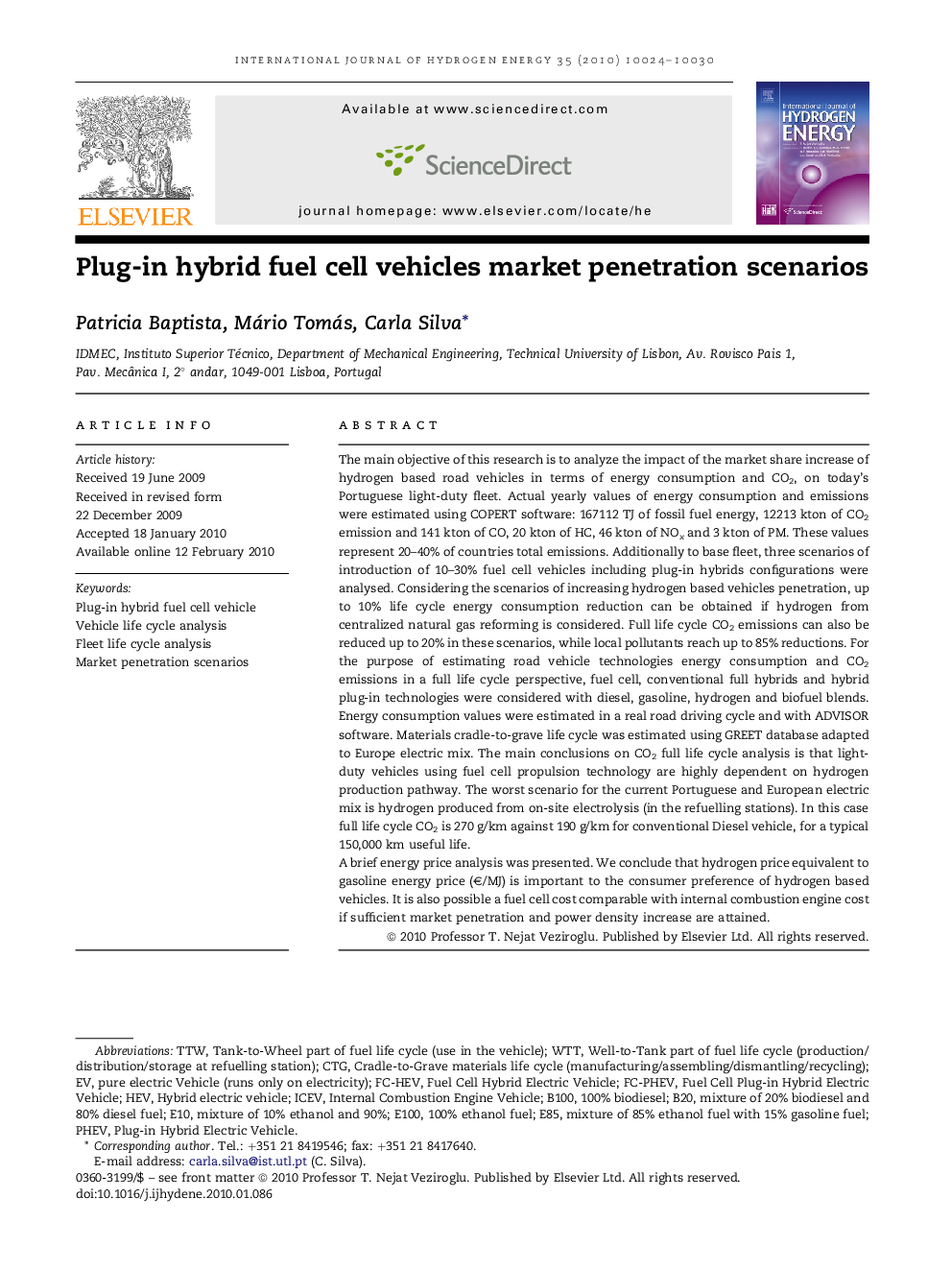| کد مقاله | کد نشریه | سال انتشار | مقاله انگلیسی | نسخه تمام متن |
|---|---|---|---|---|
| 1280302 | 1497599 | 2010 | 7 صفحه PDF | دانلود رایگان |

The main objective of this research is to analyze the impact of the market share increase of hydrogen based road vehicles in terms of energy consumption and CO2, on today's Portuguese light-duty fleet. Actual yearly values of energy consumption and emissions were estimated using COPERT software: 167112 TJ of fossil fuel energy, 12213 kton of CO2 emission and 141 kton of CO, 20 kton of HC, 46 kton of NOx and 3 kton of PM. These values represent 20–40% of countries total emissions. Additionally to base fleet, three scenarios of introduction of 10–30% fuel cell vehicles including plug-in hybrids configurations were analysed. Considering the scenarios of increasing hydrogen based vehicles penetration, up to 10% life cycle energy consumption reduction can be obtained if hydrogen from centralized natural gas reforming is considered. Full life cycle CO2 emissions can also be reduced up to 20% in these scenarios, while local pollutants reach up to 85% reductions. For the purpose of estimating road vehicle technologies energy consumption and CO2 emissions in a full life cycle perspective, fuel cell, conventional full hybrids and hybrid plug-in technologies were considered with diesel, gasoline, hydrogen and biofuel blends. Energy consumption values were estimated in a real road driving cycle and with ADVISOR software. Materials cradle-to-grave life cycle was estimated using GREET database adapted to Europe electric mix. The main conclusions on CO2 full life cycle analysis is that light-duty vehicles using fuel cell propulsion technology are highly dependent on hydrogen production pathway. The worst scenario for the current Portuguese and European electric mix is hydrogen produced from on-site electrolysis (in the refuelling stations). In this case full life cycle CO2 is 270 g/km against 190 g/km for conventional Diesel vehicle, for a typical 150,000 km useful life.A brief energy price analysis was presented. We conclude that hydrogen price equivalent to gasoline energy price (€/MJ) is important to the consumer preference of hydrogen based vehicles. It is also possible a fuel cell cost comparable with internal combustion engine cost if sufficient market penetration and power density increase are attained.
Journal: International Journal of Hydrogen Energy - Volume 35, Issue 18, September 2010, Pages 10024–10030